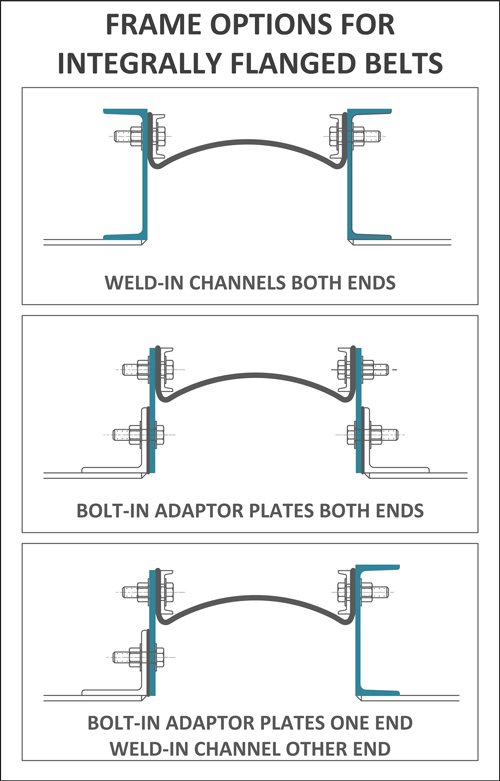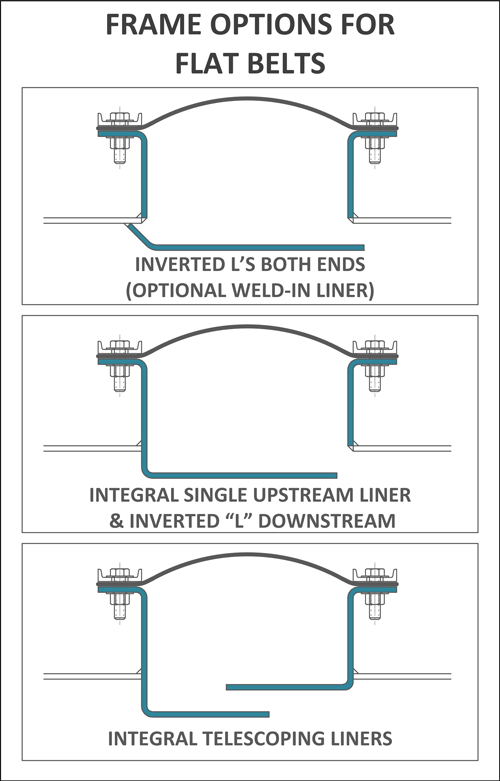Materials
Elastomers
This category of fabric expansion joint materials represents non-insulated, rubber-like materials. They are rubbery to the feel on the inside and outside surfaces. Generally speaking, they have good abrasion resistance and are commonly used in low temperature applications (under 400 degrees F). Because these materials are intended for use in applications below their temperature rating, lagging can be installed over the outside. However, we do not recommend this because it severely limits the inspection that can be done on a regular basis. The primary advantage to using elastomers is their ruggedness – they resist flutter and mechanical damage very well. However, they are limited in their temperature ratings and acid resistance. Lately, insulated elastomers have largely been replaced by insulated fluoroplastics.
Fluoroplastics
This category of fabric expansion joint materials represents both non-insulated and insulated PTFE based materials. They are slippery to the feel on the outside surface. Lagging or external insulation should never be applied over the outside surfaces of internally insulated expansion joint materials, as this will cause the belts to become overheated. The primary advantage of using fluoroplastics is their superior acid resistance. High temperature applications are handled very well using insulated fluoroplastics. However, fluoroplastics are less rugged and are more susceptible to damage from flutter and mechanical sources.
Common Applications
Absorber Inlets & Outlets, Air Bustle, Air Heater Air Inlets & Outlets, Air Heater Gas Inlets & Outlets, Baghouse Inlet, Baghouse Hopper, Booster Fan, Coal Mill, Combustion Discharge, Cyclone Inlets & Outlets, Dilution Air, Dryer, Economizer Bypass, Economizer Outlet, Forced Draft (FD) Fan Inlets & Outlets, Induced Draft (ID) Fan Inlets & Outlets, Loop Seal, Overfire Air (OFA/SOFA), Precipitator Inlets & Outlets, Purge Air Fan, QR Inlet, Return Air (RA) Fan, Scrubber Inlets & Outlets, SDA Inlet, Secondary Air, Selective Catalytic Reduction (SCR) Inlets & Outlets, Stack Inlet, Superheater, Superheater Hopper, Underfire Air.

